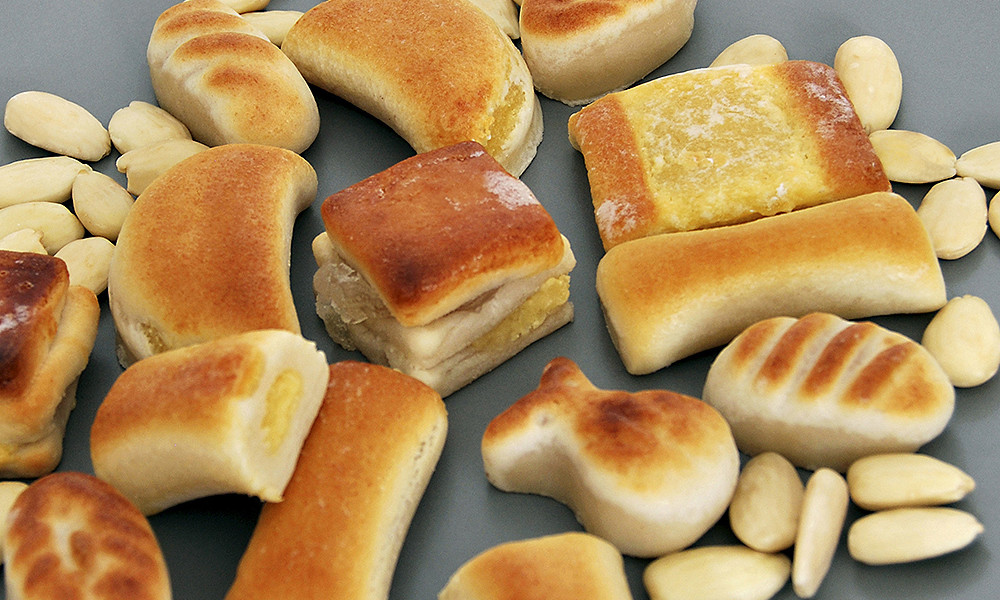



Today we’d like to present you our regional “sweet treasure”: Toledo Marzipan. It may seem a bit early to talk about something so christmassy at the end of October. But the stores are already filled with Christmas sweets and in Toledo marzipan is a much appreciated sweet people eat throughout the whole year.
Controversial origin and etymology
Until today the origin of this confection – that consists primarily of almonds and sugar – is still being discussed. There are many hypotheses regarding the origin of the product but also of the word: Some argue that marzipan is a derivation of Latin Panis Martius, Persian marzbān or Venetian matapan, which comes from the Arabic mautaban. The Royal Academy of the Spanish Language (RAE) says that it “maybe” comes from the Arabic Hispanic pičmáṭ, which derives from the Greek paxamádion or ‘biscuit’, influenced by mass and bread. As you can see, much speculation and no certainty. And the same happens when asking who invented marzipan?
Most cultural historians agree on the assumption that marzipan has its origins in the East. Although Toledo and Lübeck – the two main centers of marzipan production – are still defending two local legends which, curiously, are almost identical: Both believe that the invention of this “bread” was due to famines in the Middle ages. There’s only a slight difference on who invented it: in Spain it was supposedly nuns, in Germany a baker. But considering that almonds and sugar were very valuable in that period, these stories are quite implausible. Therefore it sounds much likely that marzipan was devised in the East and came to Spain and Europe by the hands of the Arabs.
Anyway, the best known and appreciated marzipan worldwide is still produced in Lübeck and Toledo. And as Cueva La Martina is in Castille-La Mancha, we’d like to talk about “our” marzipan.
Handcrafted Marzipan from Toledo
The “Toledo marzipan”, which received in 2002 the status of Protected Geographical Indication (IGP), is a fine paste resulting from the mixing or kneading of raw, blanched and ground almonds with sugar or sugars. Almonds must be the main ingredient or at least in a ratio of 1:1, representing 50% of the total weight. A sweet almond variety is used and the processing and packaging area of this marzipan is limited to the province of Toledo.
The resulting dough is used to make a wide variety of sweets, some of which are filled with ‘cabello de ángel’ (pumpkin strands in syrup) or cream, or dipped in chocolate. The most traditional and well known are: Figuritas (figurines), Anguilas (eels), Delicias de Mazapán (marzipan delights), Marquesas (with egg sweet), Empiñonadas (with pine nuts), Toledanas (with pumpkin strands and toasted almonds)…
In short: A traditional and natural sweet you should definitely taste when travelling through our region. When writing this text our mouths started watering….
Leave a Reply